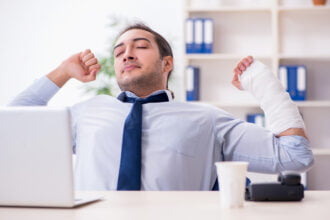Modern living with all its conveniences is not without its share of health hazards.
Advancements in infrastructure mean that we no longer have to walk miles to get drinkable water. The Digital Age and the widespread use of smartphones has curbed our need to head to the library when working on a research project. But are there downsides we should be cautious of? And if so, how do we safeguard ourselves?
Here are the most common health hazards we face in today’s modern era and what we can do about it.
Text neck and repetitive motion disorders.
A frequent ailment of our times, text neck occurs due to our devotion to our smartphones and mobile devices.
A study by Asurion found that on average we check our phones every 10 minutes. This tilting your head forward places weight on the spine that it is not mean to carry for prolonged periods. In an NBC interview with a Cleveland University doctor, Dr Mark Pfefer stated that tilting your head increases the weight felt on the spine. This results in “text neck,” that tense soreness in one’s neck. Other body aches that are felt due to overuse of our mobile devices include hand pain from cell phone use.
But with the convenience that our mobile devices bring, it would be a tall order to ask people to forgo smartphone use entirely. So what alternatives are there to avoid the pains associated with too much smartphone use?
You don’t need to break up, but you do need a break. Tips from health advocates include…
- Decide on certain hours of the day that are for offline activities where you put your cellphone down and commit to not picking it back up.
- Whenever you find yourself slouching, use it as a queue to adjust your posture. Pull your shoulders back, thrust your chest out, and stand tall.
Social media and your emotional health.
While social media is an effective way to stay in touch with family and friends, it can make for a poor environment for feeling good about oneself.
Research has suggested that your social media feeds could be the cause for you feeling blue and out of sorts. Mental health professionals point to how viewing picture-perfect bodies can result in poor body image as well as low self-esteem. Instagram was found to have the highest correlation between use and depression. With Snapchat in second place and Facebook in third.
If you find yourself only socializing via social media platforms, it might be time for a change. This is particularly the case if you feel depressed after an evening online. Instead, call up a friend and hang out with someone in person. Make sure that you also get face to face time with the people you care about.
Strong relationships with caring individuals in our lives have the power to improve our physical health. Not only our emotional wellbeing.
Too much sitting, not enough moving.
Most Americans don’t get enough physical activity. A government study lists the percentage of those who aren’t getting the recommended amount at 80 percent. This stat underlies the difficulty today’s workers face in fitting in the need to move about when their work requires them to be still.
The CDC guidelines state that adults should get at least 2 hours and 30 minutes of moderate to intense exercise or physical activity per week. Plus some strength training exercises that work your major muscle groups.
But there is good news for anyone who falls into this category of not hitting your recommended physical activity allotments.
If you thought you had to do long sessions in order to meet requirements, it may have prevented you from trying. But it does not need to be all at once. Previously, common wisdom was to at least do 20 to 30 minute sessions to contribute to your weekly total. But new research suggests that the amount matters less than the accumulated amount of time put in.
Busy people might have a rough time fitting in a 30-minute gym appointment, but anyone can find time to move about a bit more. The price of inactivity is too high to ignore. Here are some tips to up your movement throughout the day.
- Take a short walk during each work break.
- Offer to help coworkers with tasks that require you to get up and move.
- Walk to the grocery store instead of driving.
- Get up and walk in place each time your TV show breaks for ads.
- Download a fitness tracker app and use it.









